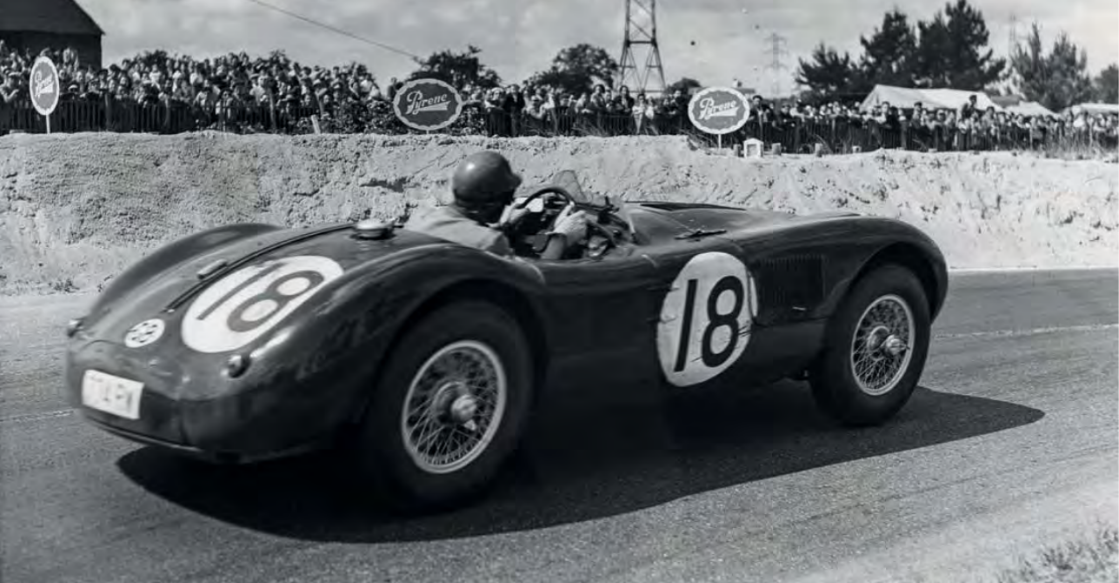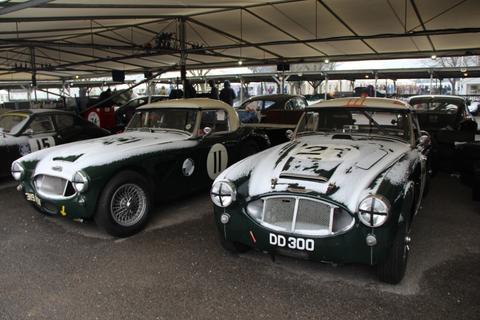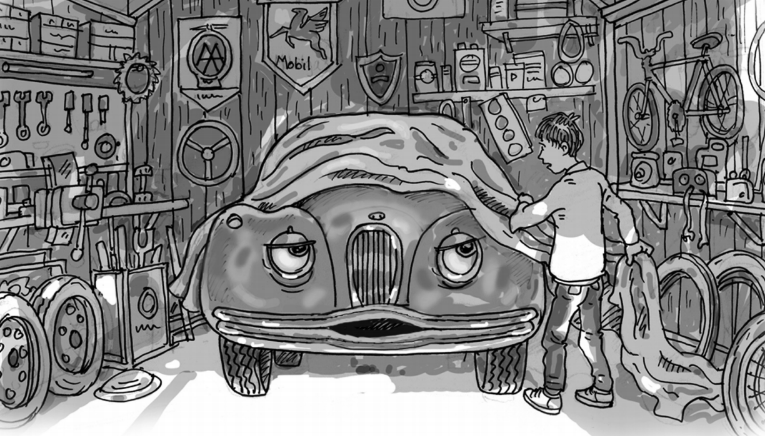
When a “drinking driver” and a Colditz prisoner won Le Mans in Jaguar’s C-type
Lewis isn’t the only Hamilton to have achieved international success as a racing driver. Exuberant Englishman Duncan Hamilton, sometimes nicknamed ‘Drunken Duncan’, also enjoyed time in the limelight after winning the Le Mans 24 Hours in 1953 - and later confessing that he’d stayed up all night before the race, because he’d thought his works-run Jaguar C-type had been disqualified, enjoying a tipple or three.
This French fable is made even more colourful by the fact that Hamilton shared the victorious Jaguar with former army officer Tony Rolt, who escaped from German Prison of War camps eight times before being transferred to the high-security castle at Colditz - where he spent many hours in the attic with three fellow prisoners, secretly constructing a glider they intended to launch from the roof.
It’s not only the characters in this Le Mans story that are unorthodox. So too is the car. Motor Sport magazine reported after Le Mans ’53 that the C-types were ‘more closely related to Jaguar’s other production cars than the sports/racing cars they beat so convincingly. . . Four started and four finished, whereas the teams of exotic Continental cars built specifically to win races such as this - Alfa Romeo, Ferrari, Lancia, Pegaso, Talbot - melted away.’ The magazine also declared that Jaguar had ‘effectively replied to the query “But what if Mercedes-Benz had run?” by beating last year’s winning average speed by 9.18 mph.’
In fact the Jaguar C-type took only 22 hours to reach the distance completed by the previous year’s winning Mercedes-Benz W194. The Rolt/Hamilton Jaguar was forced into a hot pace by the Ferrari 375 MM of Luigi Villoresi and Alberto Ascari, the two cars locked into a lead-battle from the start on Saturday afternoon right through until Sunday morning. When finally the Italian car was slowed by a slipping clutch, C-types were running one-two. The Rolt/Hamilton Jaguar took the chequered flag four laps ahead of the identical car of Stirling Moss and Peter Walker (with the works C-type of Peter Whitehead and Ian Stewart coming home fourth) and became the first car to win Le Mans at an average speed greater than 100 mph.
Hamilton later wrote in his autobiography Touch Wood! that Ascari “had a bigger and more powerful engine; I had better brakes.” Rolt agreed that the C-type “handled beautifully” and that “the brakes worked really well,” but believed that he and Hamilton also gained advantage by keeping up their pace when visibility was poor. By continually checking the tachometer to ensure they were maintaining daytime speed even in night-time darkness and early morning mist, their times over each four-and-a-half-minute lap slipped by no more than two to three seconds. In contrast, Rolt reckoned, most other runners slowed in the darkness by about 10 seconds per lap.
As with so many other legends, however, some truths about that June weekend in 1953 have been muddied with myths. One is Hamilton’s claim of his night-before drinking. It’s a great tale, consistent with Hamilton’s larger-than-life character, and one he enjoyed telling - but others present at Le Mans that weekend, Tony Rolt included, discounted it as fabricated for the purposes of entertainment. Another fallacy is the impression that the C-types were near-as-damn-it production XK120s. This belief, which contemporary media reports did little to discourage, may have helped Jaguar’s early brand-building and road car sales - but there were many discrepancies between the XK120 and XK120C, or C-type as it was more popularly known, and these added up to significant performance gains. C-types had a different body and chassis, rear suspension, lighter electrical equipment, rubber-bag fuel tank, rack-and-pinion steering, and - crucially at Le Mans in this era, where acceleration and braking mattered so much - a breathed-on engine and newfangled disc brakes rather than drums.
The fascinating story of the C-type’s origins and development, and that of the ’53 Le Mans winner in particular, can be found in Jaguar C-type - The autobiography of XKC051. Due to popular demand, this ninth title in the critically-acclaimed Great Cars series, authored by Chas Parker and Philip Porter, has just been reprinted. This book tells how XKC051 was one of just three lightweight C’s created for Le Mans that year - and how, as the model that first brought Jaguar’s name to the attention of millions of car-lovers around the world, it is probably the most important of all Jaguar sports racing cars.
Production car or not, drinking driver or not, C-type XKC051 certainly created a stir. Among the first to congratulate Jaguar on their victory, after she had been crowned just two weeks earlier, was Her Majesty Queen Elizabeth II. As Britons hung out Union Jacks for Coronation Day street parties, and as the announcement was made on the same day that Edmund Hillary and Tenzing Norgay had just become the first men to conquer Mount Everest, there was the happy illusion that the British Commonwealth, perhaps even the Empire, was literally and figuratively on top of the world. This was an impression which, no matter how fleeting, Jaguar’s internationally-publicised Le Mans victory helped to sustain.
By Phillip Bingham










Leave a comment
This site is protected by hCaptcha and the hCaptcha Privacy Policy and Terms of Service apply.